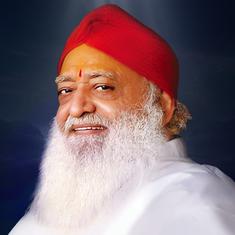Roger Federer achieved another milestone last week. No surprises there, right? After all, he has forged a career out of incredible achievements.
So when the 37-year-old won his 100th ATP title beating Stefanos Tsitsipas in the Dubai final, more than awe, it was accompanied by a sense of inevitability.
That is perhaps the bigger compliment to Federer. You expected the 100 to come sooner or later with the level he still operates at. You were already amazed by what he has achieved, the triple digit was just another landmark.
But the century also gives us a chance to examine just what a clinical career he has had. Leave aside the poetry – the paeans sung to the pretty precision of the drop shot, the brutal beauty of the forehand, the ambitious ambiguity of the second serve; Federer’s success seen through the prism of numbers alone tells a terrific tale as well.
He is only the second man to complete a ton of titles, after Jimmy Connors. The American also played well into his 30s.


Federer has won his titles over 18 years in what eventually became the strongest, most competitive era of men’s tennis. Indeed, Rafael Nadal (32) and Novak Djokovic (31) already have 80 and 76 titles.
It took Federer 49 tournaments to win his first career title in 2001. But since then, he won a title every year… winning one in every three tournaments he has participated in, even when the emergence of the Big Three/Four/Five meant his runner-up trophies increased, even when he reached a plateau in 2013 – where he won only just one title in three finals.
But didn’t win a title in 2016 – the first year he went without an ATP trophy since lifting his first. He had won 88 titles then, the last coming in Basel, where he had beaten Nadal in the final.
Beating the Spaniard in a final was always special, given how poor his head-to-head record was. But that 2015 final became even more important, given what followed next. It looked like a win his his hometown over his greatest rival would be the last title of his career.
He underwent knee surgery and sat out for six months to ensure extensive rehabilitation. It was a small price to pay if he wanted to continue playing tennis, he said. Even without a title, the year 2016 would prove to be the most crucial. Because when he did comeback in 2017, he went on to win a sensational seven titles – two Grand Slams and three Masters titles – at the age of 35. The rest, well, was history.

The year 2017 was his most successful year since 2007, the last year he was the undisputed top player. It was also the year he beat Nadal in three finals – Australian Open, Miami masters and Shanghai Masters. The remarkable, and rare, consistency against Nadal also brought their lopsided head-to-head ratio to 15-23.
Incidentally, Nadal is also the opponent Federer has beaten in most finals at 10. However, the Spaniard has returned the favour in 14 finals. Djokovic and Murray are third and fourth on this list of vanquished finalists. The second, the honour goes to Andy Roddick, Federer’s initial nemesis with seven final losses.
Fun fact: His current coach Ivan Ljubicic sits fifth in this table, with four final losses to his ward.

Having Nadal at the other end also contributed to his negative win-loss record on clay in finals. However, he has beaten the Spaniard twice in clay finals – back in 2004 and 2009. Here’s how his win-loss record racks up across surfaces.
And yes, Federer has titles on carpet as well. That is how long he has been playing and winning!

At 36, he had 95 ATP titles and at the start of 2018, 100 was a definite possibility… as was Jimmy Connors’ all-time men’s record of 109. He won the Australian Open in January and Rotterdam in February, becoming the oldest ATP world No 1 in the process.
Yet it took a whole year for the next three titles to come. Partly because 2018 saw a certain Djokovic back in full form and also because the younger players finally started to make inroads. Hence it was only fitting that his 100th title against came against Tsitsipas, who had ended his Australian Open streak.
There will be some who will feel 100 should have come a long time back – after all, he has lost in a whopping 52 finals. Even in 2018, he reached three more finals, including two Masters.
But to win a title every year for 14 straight years; to have won 20% of your titles at Grand Slams; to have won 32 titles after turning 30; to win the year-ending ATP Finals, where only the top eight players compete, a record six times: these are just indicators of how Federer has evolved and stayed on top of his game over the years.
Tsitsipas was just over two years old when he won his first ATP title. Now, he is the youngest opponent vanquished by Federer in a final. The oldest is Agassi, who himself played till 36 and has now coached two ATP Top 10 players.
In the year he turns 38, how many more can he win? He may or may not reach Connors’ all-time record, but given how smoothly he navigated the field in Dubai, he could well add to this tally in 2019 and surprise no one in the process.










